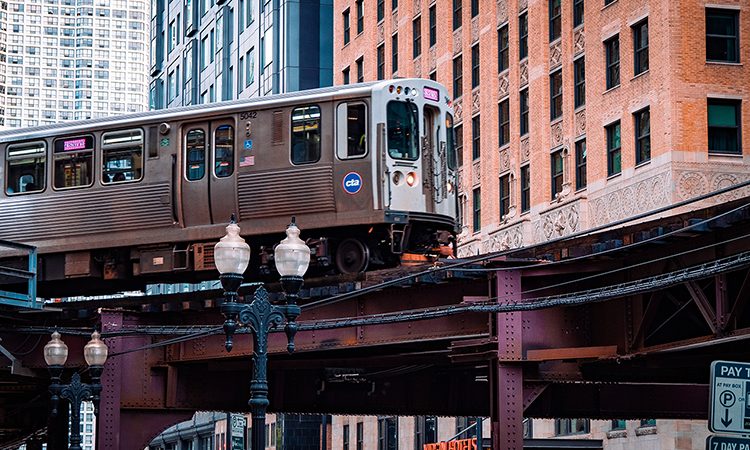The people behind the wheel: Gia Biagi’s story, Chicago Department of Transportation
- Like
- Digg
- Del
- Tumblr
- VKontakte
- Buffer
- Love This
- Odnoklassniki
- Meneame
- Blogger
- Amazon
- Yahoo Mail
- Gmail
- AOL
- Newsvine
- HackerNews
- Evernote
- MySpace
- Mail.ru
- Viadeo
- Line
- Comments
- Yummly
- SMS
- Viber
- Telegram
- Subscribe
- Skype
- Facebook Messenger
- Kakao
- LiveJournal
- Yammer
- Edgar
- Fintel
- Mix
- Instapaper
- Copy Link
Posted: 27 March 2023 | Gia Biagi - Chicago Department of Transportation | No comments yet
For Intelligent Transport’s exclusive ‘The people behind the wheel’ series, Gia Biagi, Commissioner of the Chicago Department of Transportation, discusses the key challenges and achievements that she has overcome and accomplished in her career to date, and explains how her strong desire to positively impact people and their neighbourhoods inspired her to seek a career in the transport industry.


Can you tell us about your role at the Chicago Department of Transportation?
As Commissioner of Chicago’s Department of Transportation (CDOT), I oversee the city department responsible for Chicago’s public way infrastructure and services, including roadways and bridges, pavements and bike lanes, traffic signals and signage, streetlights and alleys, the permitting of activities in the public right-of-way, the citywide bike-share and e-scooter programmes, as well as policies focused on equity, complete streets, climate adaptation, new mobility and more. This work includes development of the city’s strategic direction for transportation policies, programmes and projects.
This effort is codified in Chicago’s new Strategic Plan for Transportation, which centres CDOT’s work on transportation equity and mobility justice and guides delivery of the city’s multi-billion dollar ‘Chicago Works’ infrastructure construction programme. Note that CDOT is a separate entity from the Chicago Transit Authority (CTA), which operates most public transport services in Chicago, including the bus and city rail system; we do work closely with CTA to match our investments in train stations, bus lanes and related transit infrastructure to their goals and priorities.
What inspired you to seek a career in the transport industry?
All of this speaks to the possibility inherent in the transportation industry and why it makes it a compelling venue for a career focused on urbanism and civic impact”
As an urban planner and designer with experience in the private and public sectors, the transport industry offered an opportunity to help shape and implement a transportation system that prioritises equity and works to lower the economic and environmental burden of transport on residents and communities. That incredible potential for positive change matches well with my prior work in planning and urban design in Chicago and other cities focused on positioning public assets to do more for the communities in which they reside.
This means considering a street, for example, to be so much more than a thoroughfare for dominant users like cars and trucks. Streets must work in service of meeting community needs and aspirations across a broad spectrum. Streets operate as plural venues managing movement and repose, functioning as pathways and places, and operating simultaneously as points of convergence and separation. The complexity of the street leaves in tension the competing demands made on it, and the decisions that we make about investments in our infrastructure – where, when, how much, in what way – have an outsized influence on meeting the challenges that our cities face in terms of economic development, environmental sustainability, public safety, social cohesion and the quality of life in neighbourhoods.
All of this speaks to the possibility inherent in the transportation industry and why it makes it a compelling venue for a career focused on urbanism and civic impact.


Credit: Chicago Department of Transportation
Have you experienced any challenges in your role and, if yes, how have you overcome them?
From jammed-up supply chains and material shortages, to tight labour markets and dwindling ridership on public transit, the industry will be on a path toward recovery for several years”
Every aspect of the transportation sector has faced – and continues to face – significant challenges related to the past few years due to the COVID-19 pandemic. From jammed-up supply chains and material shortages, to tight labour markets and dwindling ridership on public transit, the industry will be on a path toward recovery for several years. Furthermore, the changes in commuting patterns and the public’s renewed recognition that streets can play a role as places for recreation, dining and more, presents welcome challenges and opportunities.
In Chicago, we responded with new initiatives and bold investments in our public way that have evolved into permanent policies and programmes. In 2021, we launched a massive new multi-year public works programme called ‘Chicago Works’ that has designated more than $4 billion in local funds for infrastructure across the city. Seeking to improve everyday life in neighbourhoods that have experienced lack of investment or significant disinvestment over the last 50 years – and were hit hardest by the pandemic – the Chicago Works programme prioritises infrastructure investment in neighbourhoods that experience more mobility and economic hardship than the balance of the city, in addition to addressing state-of-good-repair needs citywide.
Our current Open Boulevards and Outdoor Dining programmes began as part of an ‘open streets/shared streets’ response to the conditions of the pandemic and have since evolved into popular ongoing efforts that repurpose streets for uses other than for moving vehicles. This has enabled us to engage communities in more expansive conversations about the design of streets to accommodate these kinds of uses, along with furthering the growth of bus lanes and bikes lanes in our city with a local approach to growing a connected set of neighbourhood mobility networks. Part of this work includes making cycling an easy option for more Chicagoans.
Combined with our new ‘Bike Chicago’ programme… all of these efforts enable us to respond to a range of challenges and provide viable options for non-motorised transit”
As we have seen incredible ridership numbers in our bike-share programme in the past several years, with a record-setting five million rides in 2022, a significant portion of that growth was a result of membership in our bike-share equity programme that makes bike-sharing more affordable for many low-income Chicagoans. We have also continued to make investments to expand and improve Chicago’s bikeway network, adding nearly 40 miles in 2022 and surpassing 100 miles added since Chicago Mayor Lori Lightfoot took office in 2019. Chicago has averaged about 40 miles of new bikeway investments per year, compared to an average of 23 miles prior to 2020.
Combined with our new ‘Bike Chicago’ programme, which was launched in late 2022 to give free bikes to people who need them, all of these efforts enable us to respond to a range of challenges and provide viable options for non-motorised transit that connects people with the important destinations in their lives and creates great streets that help neighbourhoods to thrive.


What would be the top three highlights of your career in the industry to date?
While each of these initiatives will take years to fully come to fruition, it has been the opportunity of a lifetime to build into our organisation the vision, goals and strategies to get there”
Major highlights of my career in the industry to date would have to include leading the development of our city’s Strategic Plan for Transportation; the integration of mobility and economic hardship data as part of capital investment criteria; and the effort to expand and make meaningful our bikeway network. While each of these initiatives will take years to fully come to fruition, it has been the opportunity of a lifetime to build into our organisation the vision, goals and strategies to get there.
Where do you see yourself in five years’ time?
In the future, I hope that I am still working on ways to leverage our public infrastructure – broadly defined to include all of the public assets that a city can offer – to make for more equitable, safe, accessible, prosperous and vibrant places that meet both the needs and aspirations of the people who live there.


Related topics
Accessibility, Active travel, Micro-mobility, Passenger Experience, Public Transport, The People Behind the Wheel Series, Workplace
Issue
Issue 1 2023
Related modes
Bus & Coach, Rail
Related cities
Chicago
Related countries
United States
Related organisations
Chicago Department of Transport (CDOT), Chicago Transit Authority (CTA)
Related people
Gia Biagi








